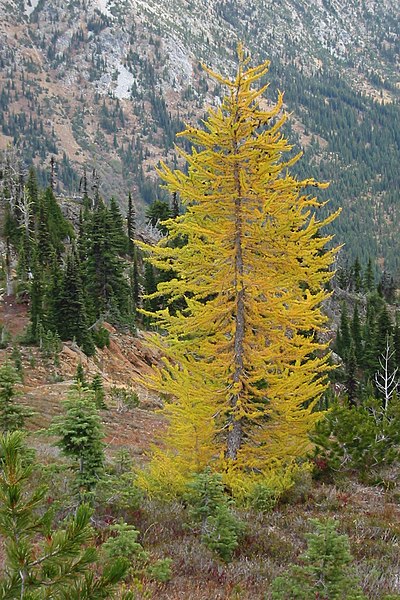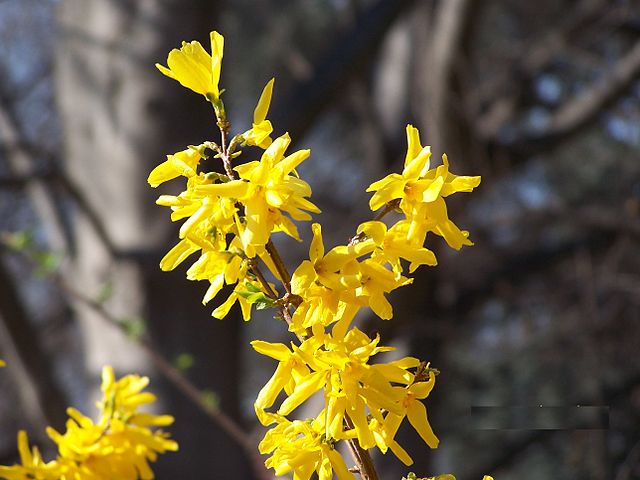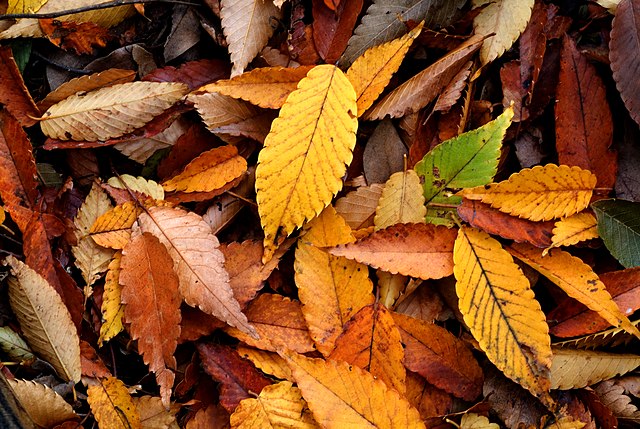Larches are deciduous conifers in the genus Larix, of the family Pinaceae. Growing from 20 to 45 metres tall, they are native to the cooler regions of the northern hemisphere, where they are found in lowland forests in the high latitudes, and high in mountains further south. Larches are among the dominant plants in the boreal forests of Siberia and Canada. Although they are conifers, larches are deciduous trees that lose their needles in the autumn.
Larch
European larch foliage and cones
Larch forest in the North Cascades
Siberian larches
In the fields of horticulture and botany, the term deciduous means "falling off at maturity" and "tending to fall off", in reference to trees and shrubs that seasonally shed leaves, usually in the autumn; to the shedding of petals, after flowering; and to the shedding of ripe fruit. The antonym of deciduous in the botanical sense is evergreen.
Like a number of other deciduous plants, Forsythia flowers during the leafless season.
Deciduous plants in mid- to high latitudes shed their leaves as temperatures drop in autumn.
Deciduous trees were introduced to the temperate regions of Australia where they are used as ornamental plants, as seen here at a suburban street in Sydney.
Dry-season deciduous tropical forest








